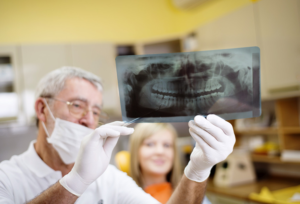Baldness, also known as alopecia, is a condition that affects millions of people worldwide. It can lead to a concern for both health and self-esteem.
Today, the quest for a reliable solution to baldness has led to the convergence of cutting-edge technology and age-old hair growth therapies.
In our quest for a comprehensive approach to hair therapy, we unravel the intricacies of baldness and explore the therapies that are at the forefront of this battle.
Read on!
Understanding the Hair Growth Cycle
Before delving into the causes of baldness, it’s essential to understand the hair growth cycle. Hair growth occurs in three phases:
- anagen
- catagen
- telogen
The anagen phase is the active growth phase where hair cells divide rapidly and push out hair from the scalp. This phase lasts for about 2-6 years and determines the length of our hair.
The catagen phase is a transitional period where the hair follicle shrinks, and hair growth stops. This phase lasts for about 2-3 weeks.
The telogen phase is known as the resting phase where hair sheds and new hair begins to grow. This final stage can last for about 3-4 months.
Promotion of Blood Circulation
One of the primary causes of baldness is poor blood circulation in the scalp. This results in a lack of essential nutrients reaching the hair follicles. It leads to weak and thinning hair. To combat this issue, many hair growth therapies focus on promoting blood flow to the scalp.
Some methods involve massaging oils or using scalp-stimulating devices. Advanced technologies such as Low-Level Laser Therapy (LLLT) are also being used to increase blood circulation. LLLT works by stimulating the production of nitric oxide. It is a vasodilator that helps improve blood flow.
Even those who are experiencing the signs of balding at 20 can benefit from these therapies. By increasing blood circulation to the scalp, hair follicles have a better chance of receiving the necessary nutrients for healthy growth.
Stimulation of Hair Follicles
Another approach to treating baldness is by stimulating hair follicles to promote new hair growth. This can be achieved through procedures such as micro-needling and platelet-rich plasma (PRP) therapy.
Micro-needling involves creating tiny punctures in the scalp using a roller or pen-like device, which triggers the body’s healing response and stimulates hair growth. PRP therapy, on the other hand, involves injecting platelet-rich plasma from the patient’s blood into the scalp to promote hair growth.
Along with hair smoothing treatment and hair implants, these therapies are gaining popularity as effective solutions for baldness.
Nutritional Support
Nutritional deficiencies can lead to hair loss and thinning. So, ensuring adequate intake of vitamins, minerals, and proteins is vital.
In addition to a balanced diet, some hair growth therapies incorporate supplements that contain essential nutrients for promoting hair health. These supplements may include biotin, vitamins B and D, and amino acids.
Some hair care brands also offer specially formulated shampoos and conditioners that claim to nourish the scalp and promote hair growth.
Understand the Science Behind Using Hair Therapy
Baldness can be a distressing condition that affects individuals physically and emotionally. However, with advancements in technology and research, hair therapy can combat this issue. From promoting blood circulation to regulating hormones and stimulating hair follicles, these therapies aim to provide a comprehensive approach to tackling baldness.
So, if you are struggling with hair loss, consult a healthcare professional to understand the science behind using hair therapy. Determine which approach may be best for you.
If you want to read more, visit our blog. We have more articles!





Be First to Comment